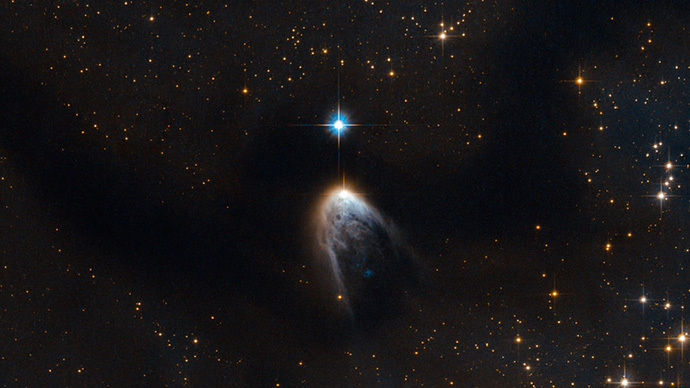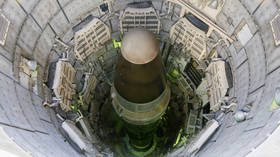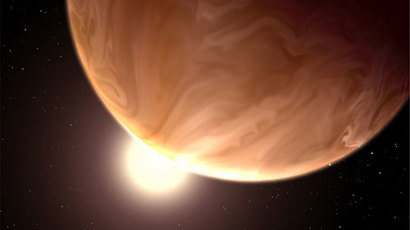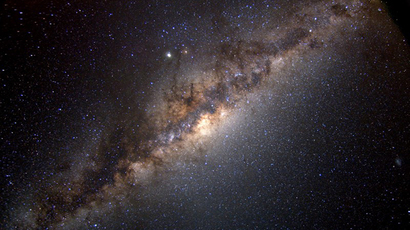Hubble telescope catches violent birth of a star

The Hubble Space Telescope has captured an image of an infant star shining clearly within a dissipating cloud of gas and dust, NASA has announced.
The young star, which scientists say was born just before the picture was taken, has been given the name URAS 14568-6304. It is located an estimated 2,280 light years away from Earth and stretches across a staggering 180 light years. The picture has attracted much attention, in part because it has a protostellar jet beneath it – a tail-like formation of gas and dust left over from the area where the star emerged from.
The star’s gravitational field also pulls material into the star, creating a dark region visible in the NASA picture.
“This dark region is known as the Circinus molecular cloud,” NASA explained in a statement. “This cloud has a mass of around 250,000 times that of the sun, and it is filled with gas, dust and young stars. Within this cloud lie two prominent and enormous regions known colloquially to astronomers as Circinus-West and Circinus-East. Each of these clumps has a mass of around 5,000 times that of the sun, making them the most prominent star-forming sites in the Circinus cloud.”
NASA believes the latest discovery will help scientists piece together additional clues regarding the phenomenon of stellar formations.














